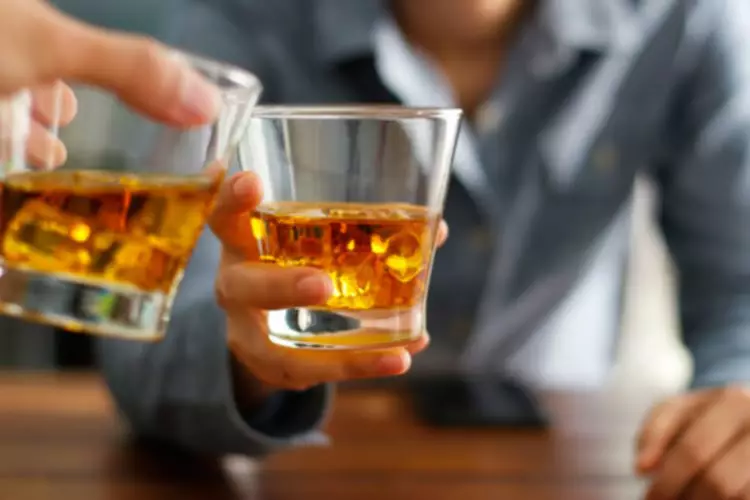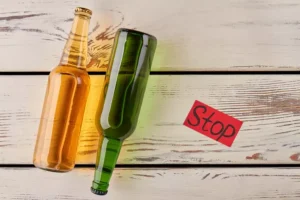
The Navigator offers a step-by-step process to finding a highly qualified professional treatment provider. Therapy is extremely helpful; CBT (cognitive behavioral therapy) is very specifically designed to uncover and challenge the kinds of negative feelings and beliefs that can undermine recovery. By providing the company of others and flesh-and-blood examples of those who https://ecosoberhouse.com/ have recovered despite relapsing, support groups also help diminish negative self-feelings, which tend to fester in isolation. Relapse is emotionally painful for those in recovery and their families. Nevertheless, the first and most important thing to know is that all hope is not lost. Relapse triggers a sense of failure, shame, and a slew of other negative feelings.
- Returning to the “real world” after a stint in residential treatment can present many stressful situations.
- This is especially the case with relapse among addicted youth.
- According to the model developed by Marlatt and Gordon, a relapse begins with a high-risk situation that is followed by a poor coping response.
- If you are at a gathering where provocation arises because alcohol or other substances are available, leave.
- The provider can help adjust the treatment plan and aid long-term recovery.
- Second, recovery is a process of personal growth with developmental milestones.
- It may be hard to think clearly, and you become confused easily.
I’m In Recovery

If you’re concerned about someone who drinks too much, ask a professional experienced in alcohol treatment for advice on how to approach that person. You attempt controlled, “social,” or short-term alcohol or drug use, but you are disappointed with the results and experience shame and guilt. You quickly lose control and your alcohol and drug use spiral further out of control. This causes increasing problems with relationships, jobs, money, mental, and physical health. Using alcohol during adolescence (from preteens to mid-20s) may affect brain development, making it more likely that they will be diagnosed with AUD later in life. However, most people with AUD—no matter their age or the severity of their alcohol problems—can benefit from treatment with behavioral health therapies, medications, or both.

What is a Relapse Prevention Plan?
If a trigger is unavoidable, consider what you can do differently next time you face it. Remember, you are an important part of the treatment team with enormous power to do good for your loved one. Taking these steps can help make their long-term recovery a reality. If you’ve experienced a relapse, your next steps are important. They think it is almost embarrassing to talk about the basics of recovery. They are embarrassed to mention that they still have occasional cravings or that they are no longer sure if they had an addiction.

National Institute on Alcohol Abuse and Alcoholism (NIAAA)
Addiction is a long-term condition, like asthma, diabetes, or high blood pressure. Of course, the goal is to stop using drugs or alcohol completely and not relapse. But when you see your addiction Alcohol Relapse as a chronic disease, you can look at relapse from that perspective, too. When comparing an opioid relapse with other drug relapses and overdoses, it’s important to understand a few things.
Instead, a relapse signifies that additional and/or a different form of treatment is necessary. Understanding relapse, triggers, and treatment are important steps toward relapse prevention. It not only involves the body and our behavior, but also our emotions and our thoughts. We will also outline some of the common warning signs of alcohol relapse as well as what to do when an alcoholic relapses. A person who misuses alcohol will feel like they are not able to function in their daily life without the use of alcohol.
Studies show that social support boosts the chances of success. Help can come in an array of forms—asking for more support from family members and friends, from peers or from others who are further along in the recovery process. It might mean entering, or returning to, a treatment program; starting, or upping the intensity of, individual or group therapy; and/or joining a peer support group. In addiction, relapse occurs when a person resumes drug or alcohol use after a period of sobriety. Relapse usually results from a mix of psychological, physical, and environmental triggers.

It is important to know that relapse does not represent a moral weakness. It reflects the difficulty of resisting a return to substance use in response to what may be intense cravings but before new coping strategies have been learned and new routines have been established. For that reason, some experts prefer not to use the term “relapse” but to use more morally neutral terms such as “resumed” use or a “recurrence” of symptoms. The general meaning of relapse is a deterioration in health status after an improvement.
- Contributors to this article for the NIAAA Core Resource on Alcohol include the writers for the full article, content contributors to subsections, reviewers, and editorial staff.
- People often need to address past trauma or familial issues during this time.
- It teaches you how to overcome negative thinking, which is often at the heart of a relapse.
- Different types of medications may be useful at different stages of treatment to help a patient stop abusing drugs, stay in treatment, and avoid relapse.
The newer types of these medications work by offsetting changes in the brain caused by AUD. 12-step facilitation therapy is an engagement strategy used in counseling sessions to increase an individual’s active involvement in 12-step-based mutual-support groups. Professionally led treatments include behavioral treatments and medications. The good news is that no matter how severe the problem may seem, most people with AUD can benefit from some form of treatment. Many others substantially reduce their drinking and report fewer alcohol-related problems.
Over time, these dopamine surges teach the brain to seek the drug or alcohol any time the user encounters a trigger. Another form of relapse is a “lapse.” A person lapsing may have one or two drinks then return to sobriety. This, too, requires a conscious decision to abandon recovery. While it is more controlled and brief than a full relapse, a series of lapses can easily progress to relapse. Recovery from AUD is marked by stages of abstinence, withdrawal, repair, and growth. While the process may take several years, the outcome is a happier, healthier life where you have the freedom to fulfill your full potential.
Use of a substance delivers such an intense and pleasurable “high that it motivates people to repeat the behavior, and the repeated use rewires the brain circuitry in ways that make it difficult to stop. Evidence shows that eventually, in the months after stopping substance use, the brain rewires itself so that craving diminishes and the ability to control behavior increases. The brain is remarkably plastic—it shapes and reshapes itself, adapts itself in response to experience and environment. Experts in the recovery process believe that relapse is a process and that identifying its stages can help people take preventative action. Whether you care for youth or adults, you are likely to encounter patients with alcohol use disorder (AUD) regularly in your practice. A change in attitude can be one of the first warning signs of a relapse.
